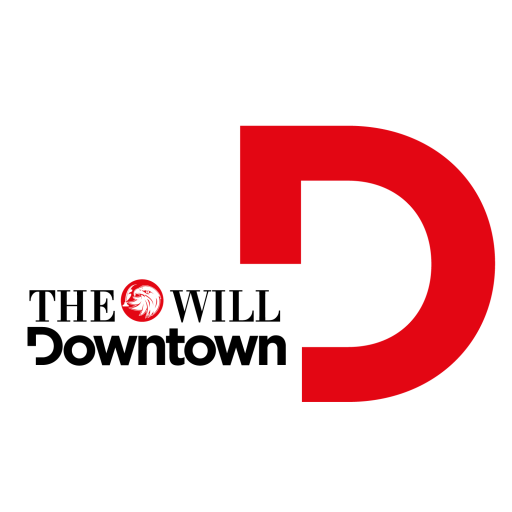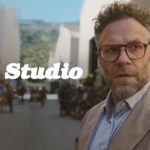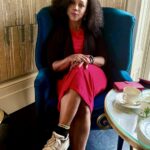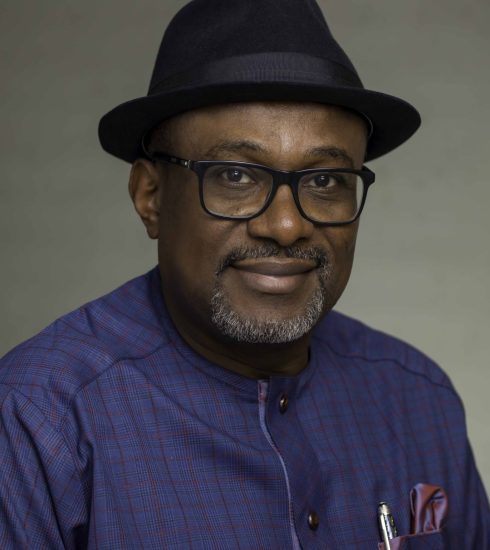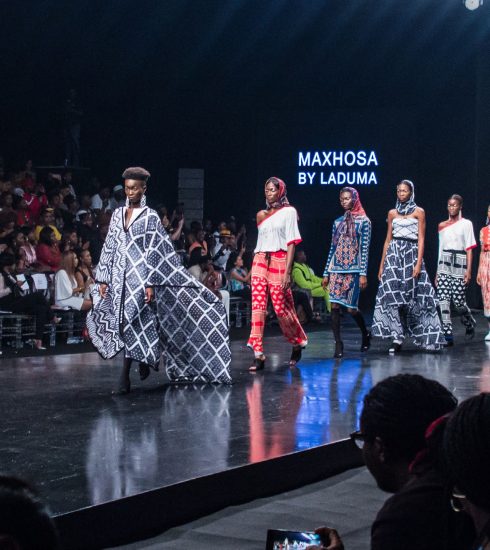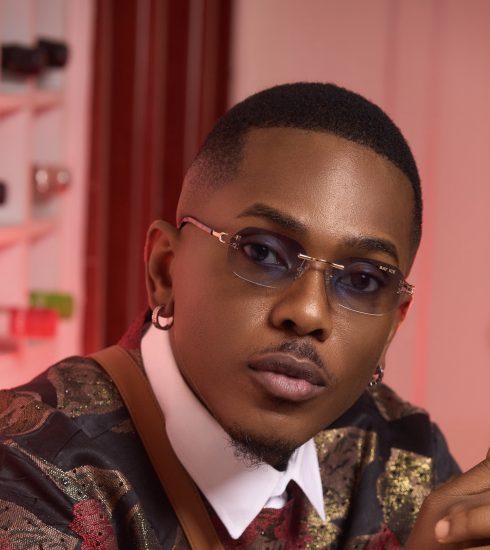Victor Ehikhamenor: Art, Culture, and Legacy
Art in Nigeria has evolved beyond decoration and beauty. It is now a powerful tool for preserving memories, passing down history, and telling stories. Over the years, artists have employed painting, sculpture, photography, and other artistic forms to explore politics, culture, identity, and everyday life. From being valued locally to receiving international recognition, Nigerian artists now showcase their work in galleries and exhibitions worldwide. Art today is more than just talent; it’s a voice, a window into the past, and a link to the present. It expresses our identity as a people and links us to others around the world.
Victor Ehikhamenor is one of the leading voices in this movement. He is a Nigerian visual artist, writer, and photographer known for using his work to explore culture, history, religion, and identity. Born and raised in a village where traditional practices shaped his worldview, Ehikhamenor found early inspiration from his grandmother weaving cloth with locally dyed thread on her mini loom, to observing his mother’s meticulous painting and decorating with homemade clay and charcoal pigments, to watching other villagers mark-making on ancient shrine walls and altars. His journey as an artist has taken him across continents, with his unique style displayed in major exhibitions worldwide. Whether through his abstract paintings, powerful photographs, or thought-provoking essays, Ehikhamenor tells stories that honour the past while confronting present realities. He is also the founder of Angels and Muse, a creative space in Lagos that supports artists and storytellers. The space serves as a hub for collaboration, inspiration, and innovation.
In this interview with THEWILL DOWNTOWN’s Dorcas Akintoye, Victor Ehikhamenor discusses his creative process, the heart behind his art, and the role of art in shaping society. He discussed his journey so far, his thoughts on Nigeria’s art scene, the future of Angels and Muse, and the legacy he hopes to leave behind with his brand.
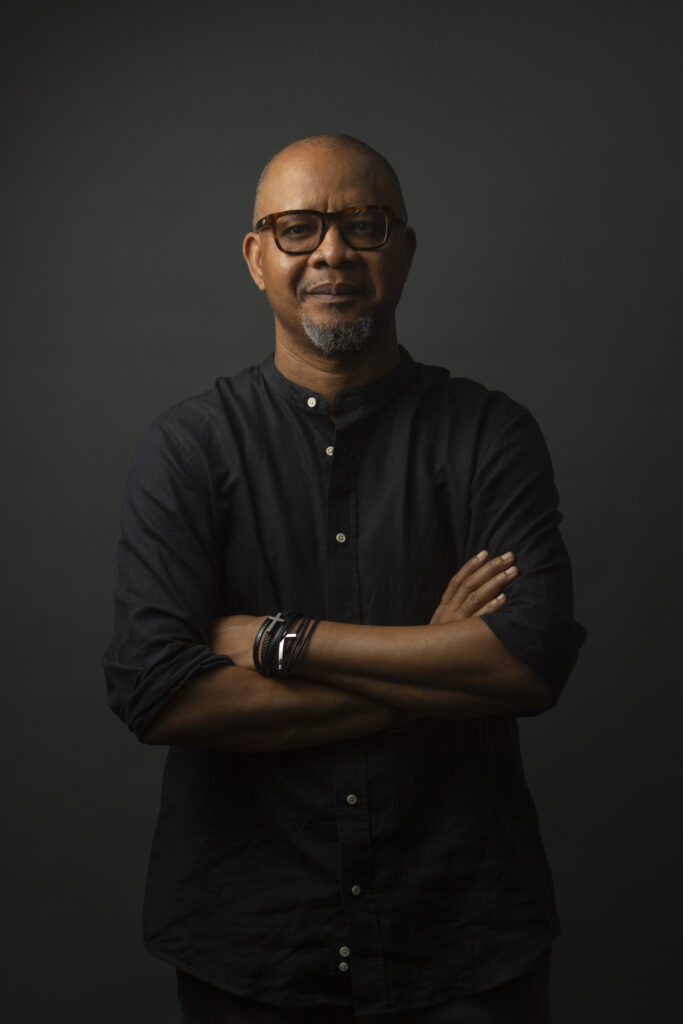
You’ve exhibited your work globally. How does the reception of your art differ across continents, particularly between African and Western audiences?
Reception varies, but at the same time, not too much difference. I believe my work is well received both at home and abroad, though I would rather leave that judgement to the viewers of the work. However, there’s no difference in the art that I show. My art is my art. Whatever I show is all made here. I work mainly from my studio in Lagos. There is a shift in materiality or sensibility – or let me say thematic pre-occupation, depending on the exhibition, the museum or the gallery, or what series of my work they want to show. Some of my art includes large-scale immersive installations in museums, or biennales – those get finished on site. Whenever I have the opportunity to show in Nigeria, I go all out because this is home for me. Some of the exhibitions I’ve done here in the past few years have been the most grandiose. For instance, what I did at ArtX in 2022 was quite large. Then at the 2024 Lagos Biennial, I installed one of my largest works thus far in my career. I built an entire church with handkerchiefs and suspended an entire church interior by having everything levitate, as in floating in the air. So again, it depends on the theme of the exhibition, and it depends on the space that I’m given to express myself.
In a world flooded with digital imagery, how did you keep your art deeply personal, rooted, and yet universally resonant?
I have always been true to myself and have never wavered in the origin of my influences and inspiration. So come rain or shine, that will always reflect in my body of work – be it visual art or writing. That’s not to say I ignore what you call digital imagery. I explore digital imagery differently – if I understand what you mean. The internet or technology is an enablement for most artists to share their works, learn about other people’s work and a huge source of research and knowledge for me. Besides that, it doesn’t influence me. I can read and also see other artists’ works and learn about what is going on around the world. It is a quicker way to travel to other regions that you can’t easily get to physically, and explore what they are doing there. If I want to see what is happening in Australia, I can check the digital footprints of museums or artists in Australia and how they are working. Same with other people around the world. If they want to know what is happening in Nigeria or what is happening in Lagos or in Benin City, where I’m from, they can do so through the internet. Even though they have never visited or may not have the opportunity to visit, the digital world is where they can experience my world, and I can experience theirs.
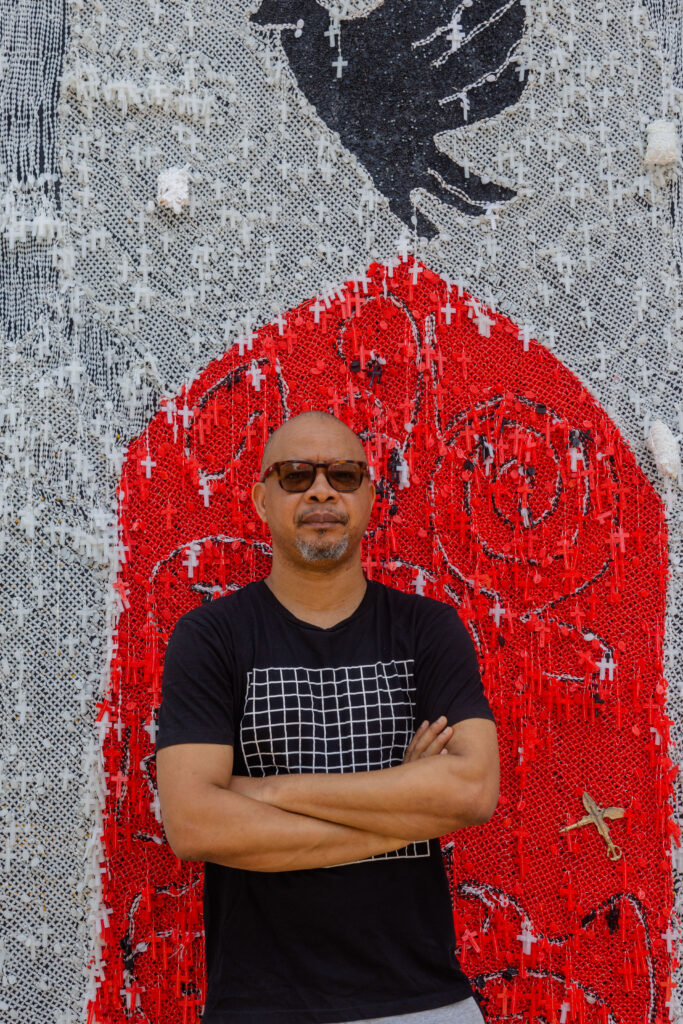
You draw inspiration from local traditions, memories, and nostalgia. What role does memory play in shaping your artistic vision?
I’ve always said that if you don’t know where you are coming from, you’re likely not going to know where you are going. Memory is a big thing for me. I mined the stories that I was told when I was growing up as a writer. Also, as an artist, I look at what has been done in the past. Nigeria, Africa, and other communities in the global south have produced some of the most amazing artists in the world. We don’t need to go too far to have those references if we can dig into our memories. What I remember being told, what I remember seeing when I was growing up as a kid in the village of Udomi-Uwessan, are all what reflect in my work today as an adult. Going back to that, the rosary pieces that I use are memories from my childhood when we used to put them around our necks and go to various catholic churches around my community. All that boils down to memory – which are really beautiful memories. I had an amazing childhood growing up, and I fancy and dig into all that beautiful past as inspiration for my works.
So what keeps you going during creative droughts or times when the world feels heavy?
I work. I just draw. I don’t think I have experienced creative droughts because there is so much to do. I have many creative outputs; as a photographer, as a multidisciplinary artist, and as a writer. So if one form is not flowing, I switch to the other. Other times, I just read. I read a lot of materials, from novels to poetry to fiction, nonfiction. Whenever I don’t feel like producing work, I pick other people’s works and consume them and get inspiration from them. It could be Ben Okri’s novels or Christopher Okigbo’s poetry – that will unclog those blockades that are referred to as drought.
Is there a particular moment in your career that solidified your decision to devote your life to art?
I’ve always been an artist. There’s no time or moment when I’ve never wanted to be an artist. I’ve been drawing since I was a four-year-old kid, at least to the best of my knowledge. At the age of nine, I had told myself that I wanted to be an artist, and my friends should call me an artist. So here we are today. Every moment is an inspiration for me to say, ok, I’m grateful to God that I’m able to do what I decided to do since I was a kid.
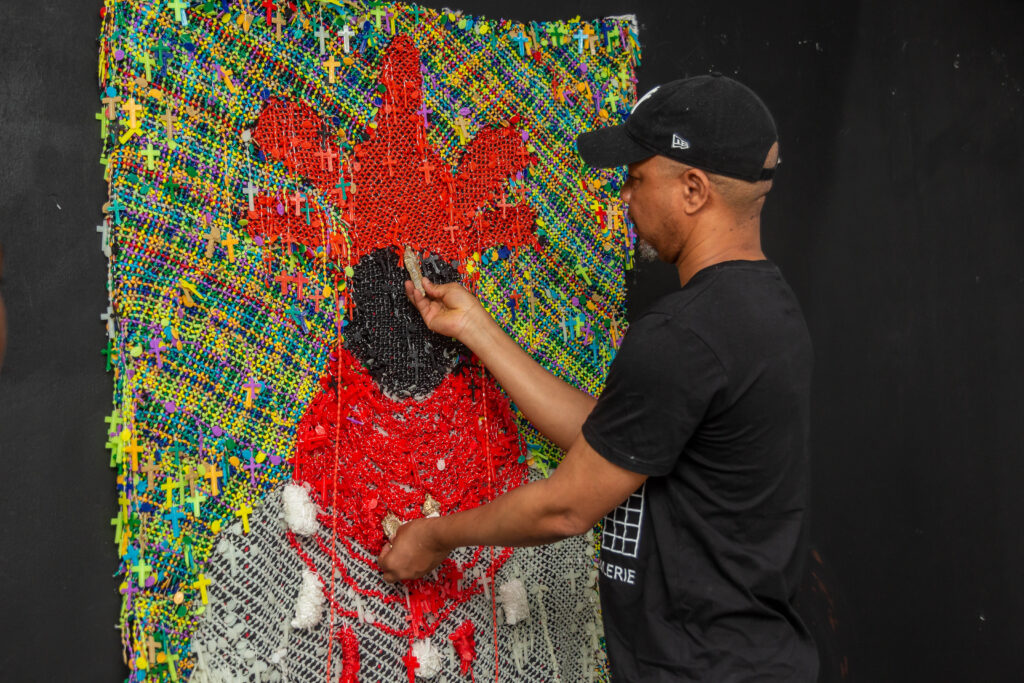
What do you think is the most misunderstood aspect of contemporary African art on the global stage?
That we are referencing mostly the West, without people knowing that we come from a long line of creative people as well. I am directly linked to my ancestors, and what comes to me could be DNA-related. There is a tendency for others to shift our influences and inspiration to other regions that are different from what we are looking at. A young man in Ibadan or Benin can paint a work, and he may never have seen or even opened a book or a monograph of any Western artist – and somebody would say, oh, this work is a copy of a work or this looks like something from Paris or what have you. No, it’s coming to him naturally, you understand what I mean? Uche Okeke said a lot through the philosophy of natural synthesis in this regard.
How do you feel about the commodification of African aesthetics in the global art market?
I don’t know if I can speak to that because, I mean, influences travel. You know, people will always borrow, but what I’ve always said is that they should please acknowledge where they are getting their inspirations from, you know. I mean, we can’t stop the world from being influenced by what is coming out of Africa because every day we keep reinventing ourselves. We have way too many creative outputs for the world not to be able to borrow from us. And we are not trying to shut off the world from Africa. But the thing is that whenever they do this, they should not take the glory. They should say, oh, I’m influenced by Benin Bronze, or I’m influenced by Ife head, or I’m influenced by, you know, Bamileke mask, and so on and so forth. You know, they should be able to say where they first saw it or what they’re inspired by, instead of thinking that they’re the ones who came up with the entire idea.
What advice would you give to emerging Nigerian artists who are trying to find their voice in a rapidly changing art industry?
They should stand their ground and keep working and not look at what other people are doing or selling – if they can, avoid market fads. If it is portraiture that is reigning today, and you paint portraiture, what if it shifts to abstraction tomorrow? What do you do? So, do what makes you feel better and good, and keep improving on your work. And read a lot. You have to read. A lot of our young artists are not reading or even know what art history is. They should also be able to respect what has come before them.
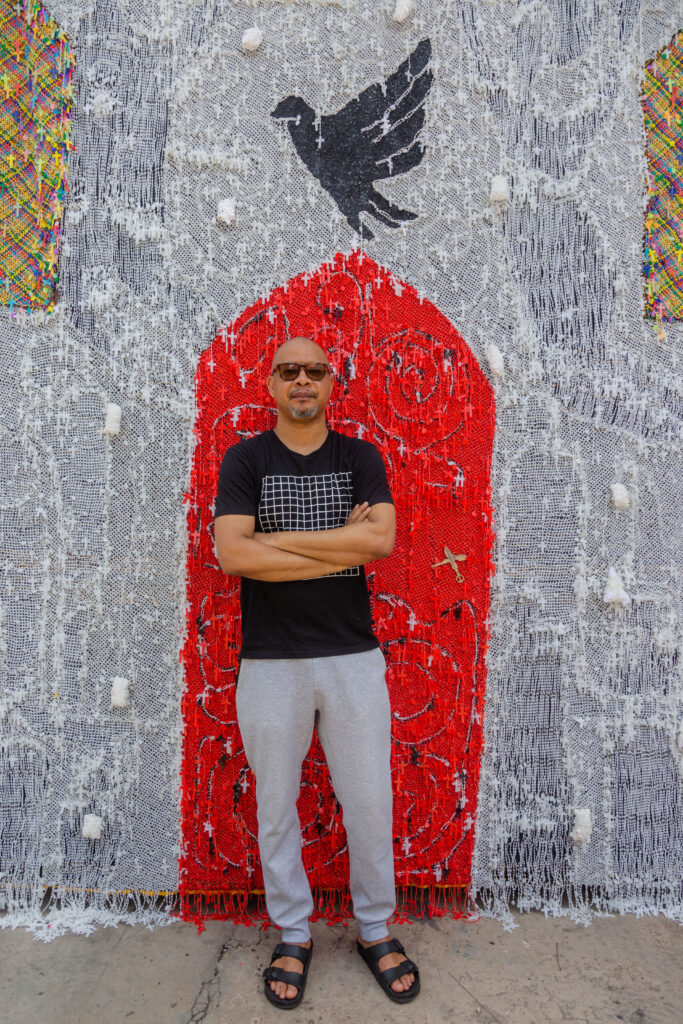
What do you think is missing in Nigeria’s art infrastructure, and what would you like to see more of?
I think it would be nice for the government to pay more attention to the creative output because there’s a lot of creativity happening amongst our young population. There needs to be a bit of resurgence in institutions, well-funded and well-run museums. Also, if our higher institutions’ curriculum can be revamped to include art history, it will be really helpful. As you can see, the US is cutting back on its funding of art now, and we can say that the lack of art funding is only happening in Nigeria – though we are still worse off here. But I think there’s a lot that can be done if there is genuine government support.
Also, our government doesn’t collect artists’ works anymore. I don’t think so, you understand. But when you look at some of the old museums and other leftover moribund institutions, you realise that people like Ben Enwonwu, Erhabor Emokpae, Bruce Onobrekpeya etc., are all in the national collection. I have been in the ecosystem for a long time now. I’ve never had a request from our government for work acquisition.
Your works have appeared in publications like The New York Times and CNN Online, and your photography has graced book covers. How do writing and photography complement your visual art practice?
This is sometimes difficult to answer in the sense that they are interrelated in many ways. All the art forms you just listed work together. Sometimes I use photography as a form of reference for my writing, or use my writing as a form of expression in photography, you know.
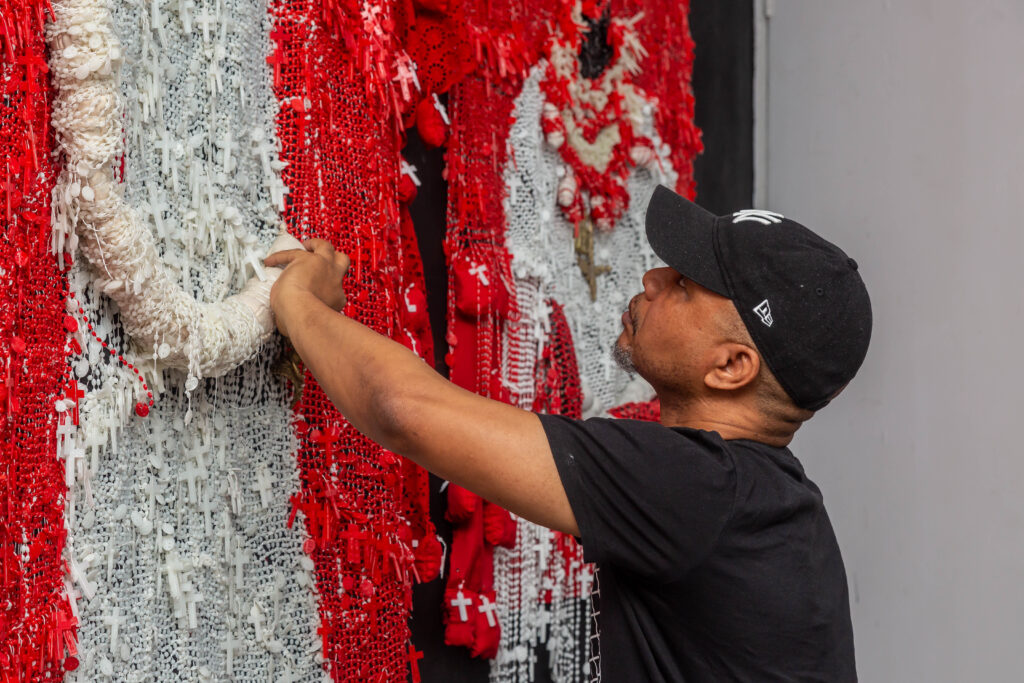
Angel and Muse was launched in 2018 as a multidisciplinary curative space. Is the space active, and how has it evolved since its launch?
Oh, it is very, very active. Angels and Muse was launched in 2018 and since expanded to Benin City, where we opened the first multi-facility that can take more than 12 artists at a time, stay in their own rooms and have places to work. And we have also started a sculpture garden in Benin as we speak, whereby young artists, mid-career artists and older artists can express themselves. We are very big on environmental conservation, so we are going to be planting tropical trees and plants that may be endangered. It’s going to be a mix of nature and man-made space. We have exhibitions almost every month that we rotate for young people who don’t have spaces to show their works. We also invite other people to teach and run workshops for writers, curators, photographers, movie directors, organza film screening, and music listening. So, it’s very multifaceted for all creatives.
So, what personal rituals or habits help you stay grounded amid your many roles as an artist, writer, photographer, and cultural curator?
When I wake up every morning, I give thanks to God that I’m able to wake up – I pick up my pen and draw. I draw every morning while having my coffee. Whatever the day brings after that, I go with the flow.
What does success mean to you at this stage in your life, and has that definition changed over the years?
Success for me is being able to create one more work that gets me excited, and if I am lucky, it also appeals to others.
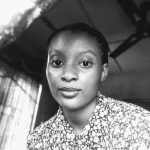
Dorcas Akintoye is a versatile writer with a passion for beauty, fashion, relationships, and culinary delight. With a keen eye for detail and a passion for storytelling, she adds a touch of elegance to every topic she explores. She is a writer at THEWILL DOWNTOWN.
